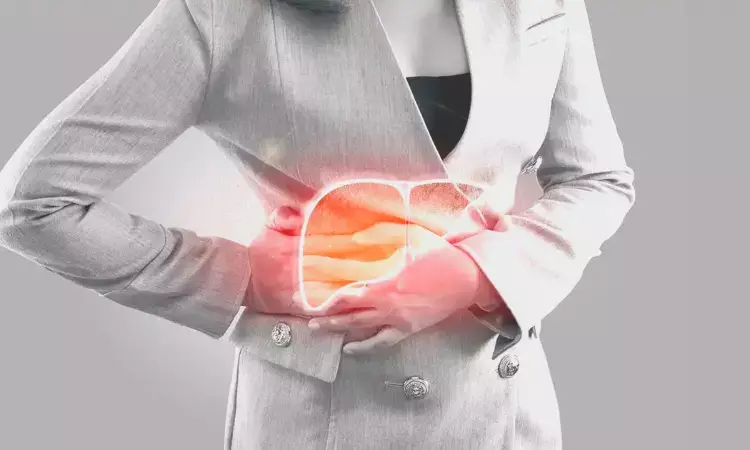- Home
- Medical news & Guidelines
- Anesthesiology
- Cardiology and CTVS
- Critical Care
- Dentistry
- Dermatology
- Diabetes and Endocrinology
- ENT
- Gastroenterology
- Medicine
- Nephrology
- Neurology
- Obstretics-Gynaecology
- Oncology
- Ophthalmology
- Orthopaedics
- Pediatrics-Neonatology
- Psychiatry
- Pulmonology
- Radiology
- Surgery
- Urology
- Laboratory Medicine
- Diet
- Nursing
- Paramedical
- Physiotherapy
- Health news
- Fact Check
- Bone Health Fact Check
- Brain Health Fact Check
- Cancer Related Fact Check
- Child Care Fact Check
- Dental and oral health fact check
- Diabetes and metabolic health fact check
- Diet and Nutrition Fact Check
- Eye and ENT Care Fact Check
- Fitness fact check
- Gut health fact check
- Heart health fact check
- Kidney health fact check
- Medical education fact check
- Men's health fact check
- Respiratory fact check
- Skin and hair care fact check
- Vaccine and Immunization fact check
- Women's health fact check
- AYUSH
- State News
- Andaman and Nicobar Islands
- Andhra Pradesh
- Arunachal Pradesh
- Assam
- Bihar
- Chandigarh
- Chattisgarh
- Dadra and Nagar Haveli
- Daman and Diu
- Delhi
- Goa
- Gujarat
- Haryana
- Himachal Pradesh
- Jammu & Kashmir
- Jharkhand
- Karnataka
- Kerala
- Ladakh
- Lakshadweep
- Madhya Pradesh
- Maharashtra
- Manipur
- Meghalaya
- Mizoram
- Nagaland
- Odisha
- Puducherry
- Punjab
- Rajasthan
- Sikkim
- Tamil Nadu
- Telangana
- Tripura
- Uttar Pradesh
- Uttrakhand
- West Bengal
- Medical Education
- Industry
Increased Parathormone levels linked to Non-Alcoholic Fatty Liver Disease

Increased parathormone levels are significantly associated with nonalcoholic fatty liver syndrome but not considerably related to non-alcoholic steatohepatitis. Increased parathormone levels can be used as a marker for nonalcoholic fatty liver syndrome. The study results were published in the journal Diabetes & Metabolic Syndrome.
Nonalcoholic fatty liver disease has become a growing challenge for public health due to the increasing prevalence of diabetes and obesity globally. NAFLD is a common chronic liver disease, associated with various metabolic disorders. Recent literature has suggested that despite inconsistent results, increased parathyroid hormone levels were associated with nonalcoholic fatty liver disease (NAFLD) and non-alcoholic steatohepatitis (NASH). Hence researchers conducted a systematic review and meta-analysis to determine the association of parathormone with NAFLD and NASH.
A search approach centered around the keywords "NAFLD/NASH" and "PTH" was used to find potentially eligible studies in the Embase and Medline databases. The study included groups of patients with NAFLD/NASH and those without NAFLD/NASH. The study must give both groups' mean and standard deviation for PTH. To calculate the mean difference (MD), such data was extracted. Then, using a random-effects model, the MDs from each trial were combined to create the pooled MD. A funnel plot was utilized to determine whether or not there was publication bias.
Key findings:
- A total of 388 articles were identified.
- After a systematic review, 12 studies fulfilled the eligibility criteria and were included in the meta-analysis.
- The meta-analysis of 10 studies revealed a significant association between high PTH and NAFLD, with a pooled MD of 5.479.
- The funnel plot was symmetric and did not suggest publication bias.
- The meta-analysis of 4 studies revealed a non-significant association between high PTH and NASH, with a pooled MD of 11.955.
Thus, high parathormone levels can be a potential marker for NAFLD as there was a significant association between NAFLD and PTH levels.
Further reading: Jaroenlapnopparat A, Rittiphairoj T, Chaisidhivej N, Walker B, Charoenngam N. High parathyroid hormone level as a marker of non-alcoholic fatty liver disease and non-alcoholic steatohepatitis: A systematic review and meta-analysis [published online ahead of print, 2023 Jul 7]. Diabetes Metab Syndr. 2023;17(8):102827. doi:10.1016/j.dsx.2023.102827
BDS, MDS
Dr.Niharika Harsha B (BDS,MDS) completed her BDS from Govt Dental College, Hyderabad and MDS from Dr.NTR University of health sciences(Now Kaloji Rao University). She has 4 years of private dental practice and worked for 2 years as Consultant Oral Radiologist at a Dental Imaging Centre in Hyderabad. She worked as Research Assistant and scientific writer in the development of Oral Anti cancer screening device with her seniors. She has a deep intriguing wish in writing highly engaging, captivating and informative medical content for a wider audience. She can be contacted at editorial@medicaldialogues.in.
Dr Kamal Kant Kohli-MBBS, DTCD- a chest specialist with more than 30 years of practice and a flair for writing clinical articles, Dr Kamal Kant Kohli joined Medical Dialogues as a Chief Editor of Medical News. Besides writing articles, as an editor, he proofreads and verifies all the medical content published on Medical Dialogues including those coming from journals, studies,medical conferences,guidelines etc. Email: drkohli@medicaldialogues.in. Contact no. 011-43720751



